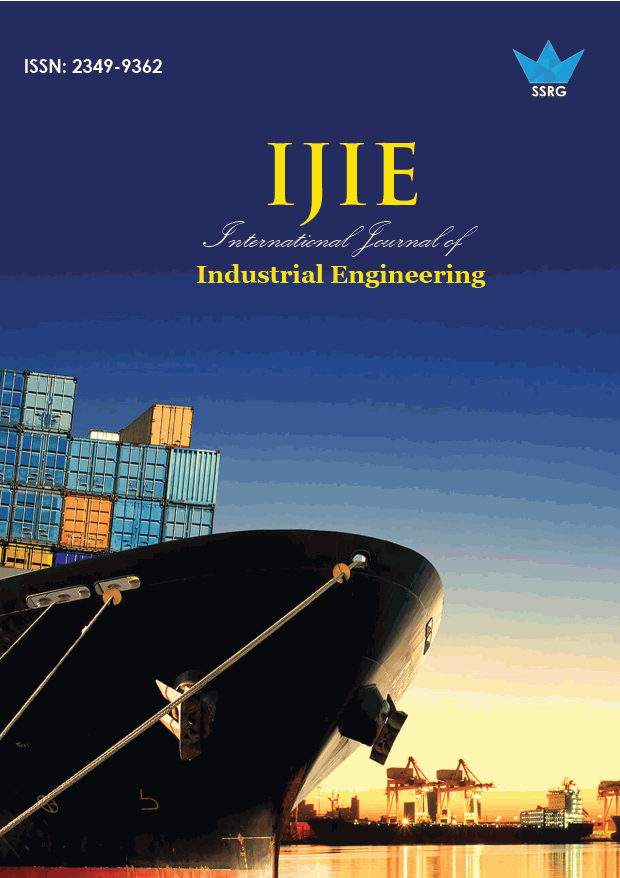Roles of Computer Applications And Tools In Transport Research Processes

| International Journal of Industrial Engineering |
| © 2020 by SSRG - IJIE Journal |
| Volume 7 Issue 1 |
| Year of Publication : 2020 |
| Authors : Adeniran, Adetayo O. Kanyio, Olufunto A. |
How to Cite?
Adeniran, Adetayo O. Kanyio, Olufunto A., "Roles of Computer Applications And Tools In Transport Research Processes," SSRG International Journal of Industrial Engineering, vol. 7, no. 1, pp. 35-40, 2020. Crossref, https://doi.org/10.14445/23499362/IJIE-V7I1P104
Abstract:
This study explored the roles of computer applications and tools in the transport research process. Information technology (IT) has become evident in the 21st century with the advent of the computer. IT is the encapsulation of computer and telecommunication applications that is used for storing, transmitting, and sending, retrieving, and processing data. IT is an essential part of transport research processes from the beginning stage to the completion stage. The transport research process has witnessed a swift turnaround in the 21st century with the advent of information and communication technology. The most promising tool in the transport research process is a computer. A computer is an indispensable tool in the research process, either for academic purposes or for commercial purposes. The usage of computers in the transport research process is massive such that it is complicated to achieve the successes of transport researches recorded in the present era without the usage of the computer. Several studies conducted today cannot be carried out with the devoid of computer especially those researches that involve highly complicated computations, modeling, and data analysis. Computers are applied in the transport research process from the conceptualization of the research idea to the publishing of the outcome such that the results emanated from such researches will be presented to the transport world.
Keywords:
roles; computer; application; transport research
References:
[1] Huber, A. (2004). “Mobile Payment-A comparison between Europe and the US: Semester Thesis”, University of Zurich, 2004.
[2] Adeniran, A. O. (2016). “Impacts of the Fourth Industrial Revolution on Transportation in the Developing Nations”. International Educational Scientific Research Journal, 2(11), 56-60.
[3] Modh, J. C. (2014). “Role of Computer Applications and Tools in the Research Process”. International Journal of Research in Science and Technology, 3(5), 33-40
[4] Rich, M. (2020). “Research and Collaboration Tools for Students, Staff, and Faculty: Creating a Modern Memex”. Retrieved on 8th February 2020, from http://richmccue.com
[5] Omkar, P. (2020). “Role of Computers in Research”. Retrieved on 8th February 2020, from http://www.buzzle.com/articles/roleof-computers-in-research.html
[6] Branislav, R. T. (2017). “A Brief Overview of the Development of Computers”. Research & Reviews: Journal of Engineering and Technology, 6(2), 1-8.
[7] BreznIK, Li. (2012). “Can information technology be a source of competitive advantage?” Economic and Business Review, 14(3), 251-269.
[8] Zuboff, S. (1985). “Automate-Information: The new faces of intelligent technology”. Organizational Dynamics, 14, 5-18.
[9] Zuboff, S. (1988). In the Age of the Smart Machine: The Future of Work and Power. New York: Basic Books.
[10] Hemmatfar, M., Salehi, M., and Bayat, M. (2010). “Competitive advantages and strategic information systems”. International Journal of Business and Management, 5(7), p158.
[11] Kothari, C. R. (2004). “Research Methodology, Methods, and Techniques”. New Age International Publishers, pp.10-19.
[12] Adeniran, A. O. (2018). “Establishing Chi-Square as a Non-Parametric Test in Descriptive Statistics”. Science and Technology, 4, 106-113.
[13] Adeniran, A. O., Adekunle, E. A., and Oyedele, O. J. (2017). “Establishing the Concept of Research Hypothesis through the Relationship Between Demand in Nigeria” International Air Passenger Traffic and Economic Variables. International Journal of Economic Behavior and Organization, 5(5), 105-113.

 10.14445/23499362/IJIE-V7I1P104
10.14445/23499362/IJIE-V7I1P104